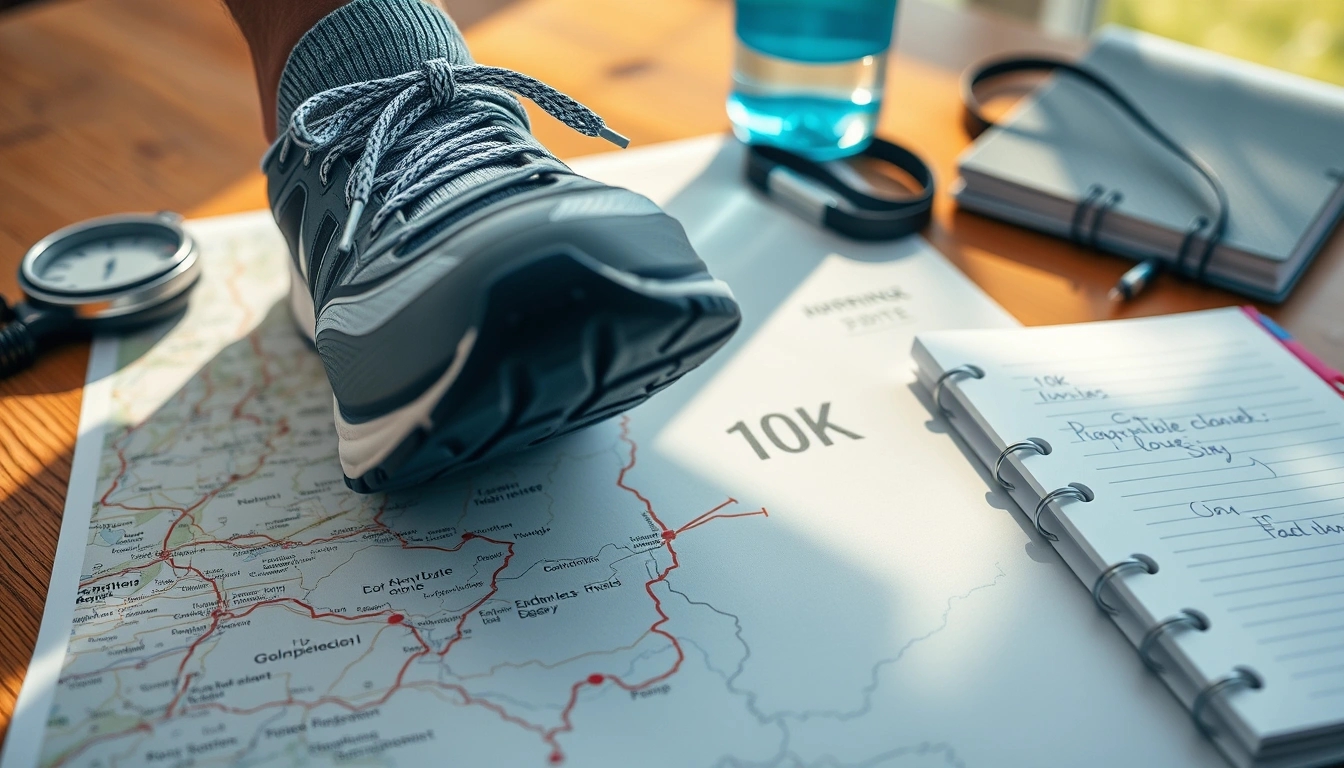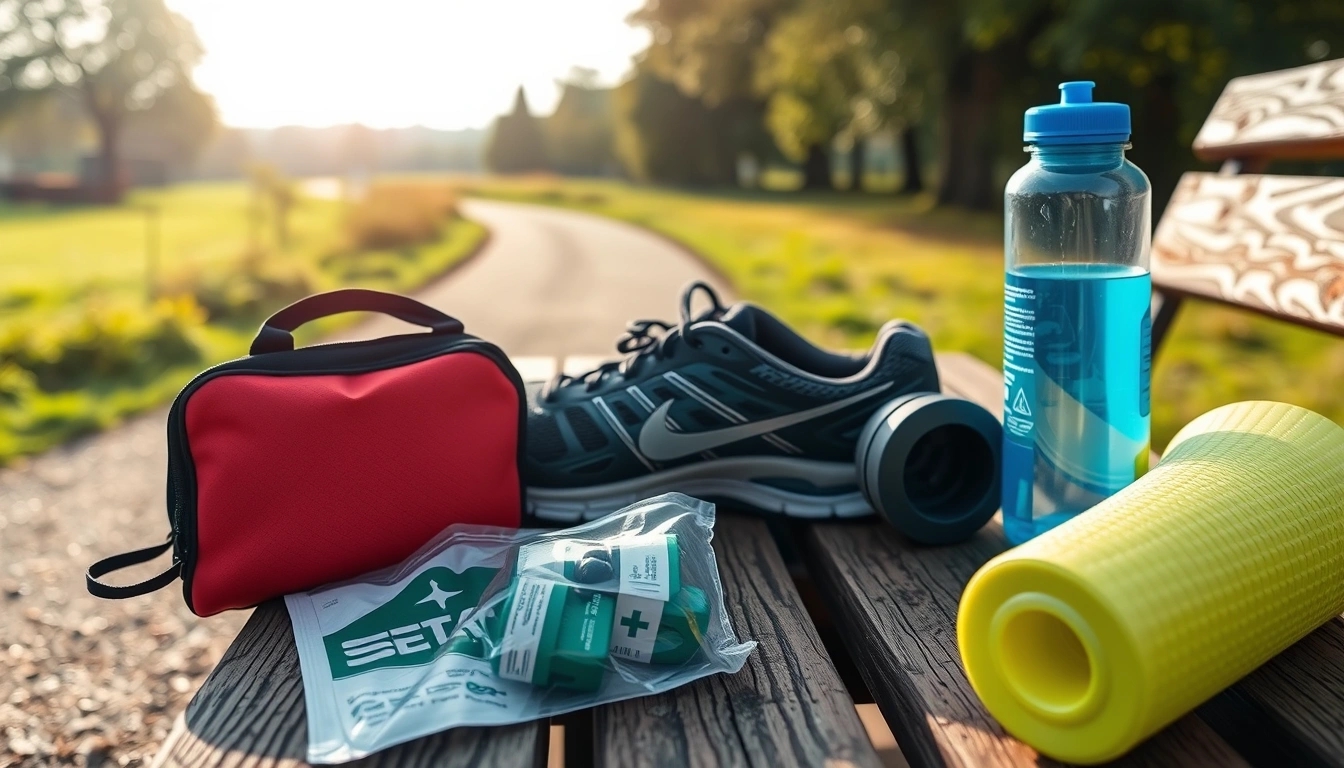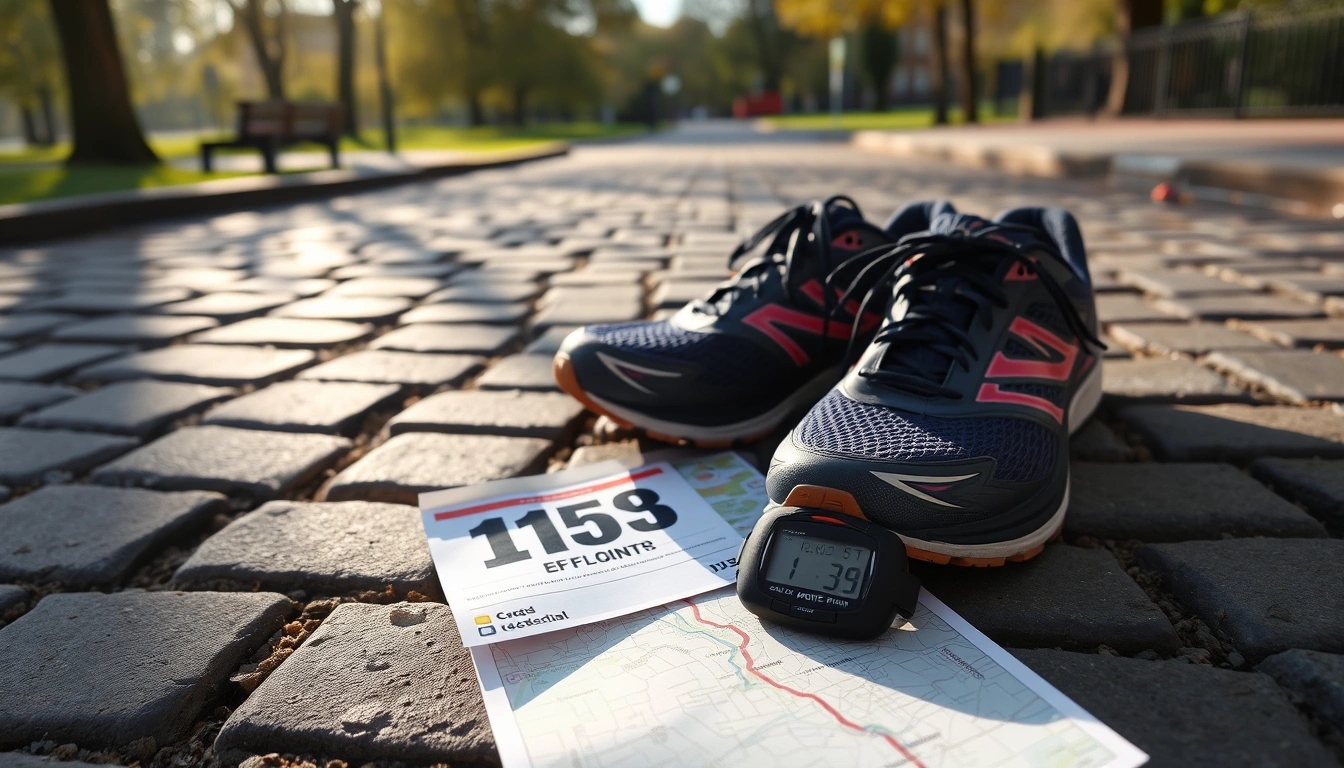So, you’ve decided to tackle your first 10k race in the UK? Brilliant choice! It’s a fantastic challenge, but let’s be honest — it can also feel a bit like stepping into the unknown. You’re probably wondering, “Where do I even start?” Don’t sweat it, we’ve got you covered. This isn’t just some dry “run this many miles” lecture. We’re talking real talk — training tips, gear advice, nutrition hacks, and race day wisdom to get you across that finish line without looking like you’ve just been chased by a pack of wild dogs.
Understanding the Basics
First off, a 10k is 6.2 miles. Not a walk in the park, but also not a marathon. Most UK races are pretty well organized, with everything from city runs in London to scenic countryside courses. Expect a mix of pavement, maybe some hills (ugh), and a lot of fellow runners trying to look cool while gasping for air. The atmosphere? Electric. The nerves? Totally normal.
| Race Fact | Details |
|---|---|
| Distance | 10 kilometers / 6.2 miles |
| Typical Terrain | Roads, parks, occasional hills |
| Average Finish Time | 50-70 minutes for beginners |
| UK Popular Races | Great North Run, Vitality London 10k, Cardiff 10k |
Setting Realistic Goals
Before you dive headfirst into training, take a moment to set some goals. And no, “winning the race” probably isn’t realistic if this is your first go. Instead, think along the lines of “finishing without walking,” or “beating my couch potato self.” Time targets can be motivating but don’t beat yourself up if you miss them. Progress is progress, even if it’s slow and steady.
- Start with a baseline run to know where you’re at.
- Set mini goals: weekly mileage, pace improvements.
- Celebrate small wins — like running an extra 5 minutes without stopping.
Training Tips: What You Really Need to Know
Training for a 10k is less about running till you drop and more about smart planning. Most beginner plans last between 8 to 12 weeks, gradually increasing your mileage. Don’t be that person who tries to do too much too soon — injuries love that. Mix in some cross-training (cycling, swimming) to keep things interesting and your muscles balanced.
| Week | Approximate Mileage | Key Focus |
|---|---|---|
| 1-4 | 10-15 miles | Building base endurance |
| 5-8 | 15-25 miles | Increasing pace and distance |
| 9-12 | 20-30 miles | Race-specific training & tapering |
Don’t Forget Rest Days
Rest days aren’t just “lazy days.” They’re when your body repairs itself. Skipping rest? Say hello to shin splints and cranky knees. Make sure you schedule at least one or two days off running each week. Your body will thank you.
Gear Up Wisely
You don’t need the fanciest shoes out there, but do invest in a decent pair that fits well. Running in old trainers? Recipe for blisters and pain. Also, dress for the unpredictable UK weather — layers are your friend.
- Get fitted for shoes at a running store.
- Choose moisture-wicking clothes.
- Consider a lightweight waterproof jacket.
Fueling Your Runs
Eating right can be confusing, but here’s a quick tip: carbs are your friends before runs, protein helps after. Don’t try new foods on race day — stick with what your stomach knows.
Race Day Tips
On the big day, pace yourself — it’s easy to get caught up in the adrenaline and sprint out too fast. Hydrate, but don’t overdo it. And remember, crossing that finish line is a win no matter your time.
So, lace up, keep it real, and enjoy the journey. Your first 10k in the UK is waiting — and it’s going to be one heck of a ride!
Understanding the 10k Race Basics
So, you’re thinking about tackling a 10k race in the UK? Well, buckle up, because it’s not just a casual jog in the park — although, sometimes it might feel like that (or worse!). Let’s get down to the nitty-gritty of what exactly a 10k means, how these races typically roll, and what you can expect when race day finally arrives.
First off, 10k stands for 10 kilometres — that’s about 6.2 miles for those of us still clinging to imperial units. Not a marathon, not a sprint, but somewhere in the middle. It’s long enough to test your stamina and short enough that you can probably still hold a conversation… or at least grunt convincingly without collapsing. Don’t be fooled though, 10k can be deceptively tough!
| Distance | Equivalent | Typical Completion Time (Beginner) |
|---|---|---|
| 10 kilometres | 6.2 miles | 50-70 minutes |
Now, about the race formats — in the UK, 10k races come in all shapes and sizes. You might find yourself running through city streets, scenic parks, or even countryside trails. Some events are chip-timed (fancy tech that tracks your exact start and finish time), while others might be more relaxed, community-focused runs where the vibe is just as important as the stopwatch. Expect a mix of competitive races and fun runs, charity events, or themed races where costumes are encouraged (yes, really!).
- Chip-timed competitive races: Serious business, with official results and sometimes prize money.
- Charity and fun runs: More about the experience and raising money than smashing records.
- Trail 10ks: Expect uneven terrain, mud, and a bit more challenge.
Race day in the UK can be a bit of a rollercoaster. The weather? Oh, unpredictable as ever — you might start off shivering in the drizzle and finish basking in an unexpected sunny spell. Typically, races kick off early morning to avoid the midday crowds and heat (or to get it done before your Sunday roast). You’ll find the start line buzzing with nervous energy, runners stretching, and last-minute toilet queues that seem to stretch forever.
Here’s a quick checklist of what to expect on race day:
| What to Expect | Details |
|---|---|
| Race Pack Collection | Usually the day before or early morning; includes your bib and timing chip. |
| Warm-Up Zone | Space to stretch and get your muscles ready, often led by a coach or volunteers. |
| Start Line | Organised into waves or corrals based on expected finish times. |
| Hydration Stations | Strategically placed every 2-3k with water or sports drinks. |
| Finish Line | Medals, refreshments, and sometimes post-race entertainment. |
All in all, the 10k is a brilliant entry point for anyone wanting to dip their toes into the running world without committing to a marathon’s madness. It’s challenging, rewarding, and, let’s be honest, a great excuse to eat cake after. So lace up, get out there, and remember: every runner was once a beginner who didn’t know what they were doing either. Cheers to your first 10k adventure!
Setting Realistic Goals
Alright, so you’re pumped to run your very first 10k in the UK — that’s brilliant! But before you just throw on your trainers and dash out the door, let’s talk about something many runners overlook: setting realistic goals. It’s easy to get caught up in the excitement and aim for some wild time target that’s way beyond your current ability. Spoiler alert: that’s a fast track to burnout or injury. So, let’s keep it real and practical.
First things first, ask yourself: what do you want out of this race? Is it finishing without walking? Beating your mate’s time? Or maybe just crossing the finish line without collapsing? Every goal is valid but they need to be achievable and measurable. You don’t want to set yourself up for disappointment by aiming for an Olympic qualifying time when you’ve only been jogging around the block.
- Start with your current fitness level. Can you comfortably run 3k right now? 5k? If not, that’s your starting point.
- Pick a realistic finish time. For beginners, finishing a 10k anywhere between 60 to 75 minutes is a solid target. If you’re feeling cheeky, shave off a few minutes as you progress.
- Set personal milestones. These are smaller wins along the way — like running 4k without stopping or hitting a certain weekly mileage.
Here’s a quick table to give you an idea of pacing and finish times for your 10k goals:
| Goal Finish Time | Average Pace per km | Average Pace per mile |
|---|---|---|
| 60 minutes | 6:00 min/km | 9:39 min/mile |
| 70 minutes | 7:00 min/km | 11:15 min/mile |
| 80 minutes | 8:00 min/km | 12:52 min/mile |
Now, here’s the kicker: motivation can be a slippery beast. One day you’re pumped, the next you’re binge-watching TV wondering why you signed up for this madness. That’s normal. To keep yourself on track, try these tips:
- Write your goals down and stick them somewhere visible — fridge door, bathroom mirror, your running shoes (okay, maybe not literally inside the shoes).
- Find a running buddy or join a local club. Nothing like a bit of peer pressure to get you out the door.
- Celebrate the small victories. Did you run an extra 500m today? Awesome! Treat yourself to something nice (a fancy smoothie, maybe?).
Remember, your goals should be flexible. Life happens — work gets crazy, weather turns rubbish, your dog eats your laces (true story). Adjust your targets if needed, but don’t ditch them completely. And if you’re struggling to set goals, here’s a quick checklist:
✔ Can I run 3k comfortably?✔ What’s my current pace?✔ What’s a finish time that won’t crush my spirit?✔ What weekly milestones can I realistically hit?✔ How will I stay motivated?
Setting realistic goals isn’t about playing it safe; it’s about setting yourself up for success so you can enjoy the journey as much as the finish line. Because at the end of the day, running your first 10k is a massive achievement — no matter the time on the clock. So, lace up, set those goals, and get ready to surprise yourself.

Creating Your Training Plan
Training is where the real magic kicks in—no fairy dust, just sweat and determination. If you’re gearing up for your very first 10k, crafting a solid 8 to 12-week plan is your golden ticket to crossing that finish line without collapsing in a heap. But hold up, before you start pounding pavements like a caffeinated squirrel, let’s break down how to build a balanced plan that won’t leave you injured, exhausted, or questioning your life choices.
First off, consistency beats intensity. It’s tempting to go all out on day one, but slow and steady wins this race. Beginners should aim for 3 to 4 running sessions per week, gradually upping the mileage. Think of it like climbing a ladder—don’t leap to the top rung or you’ll fall flat on your face. A typical week might look like this:
| Day | Activity |
|---|---|
| Monday | Rest or light cross-training (cycling, swimming) |
| Tuesday | Easy run (2-3 miles) |
| Wednesday | Rest or strength training |
| Thursday | Interval training or hill repeats |
| Friday | Rest |
| Saturday | Long run (start at 3 miles, build up) |
| Sunday | Active recovery (walking, yoga) |
Notice the rest days? They’re not just for couch potatoes. Your muscles need time to repair and get stronger. Skipping rest is like trying to fill a bucket with a hole in it. Don’t be that person. Incorporate at least two rest or active recovery days weekly. Active recovery means low-impact activities that keep you moving without beating your body up.
Now, about that mileage increase—don’t go crazy. The 10% rule is your best friend here. Increase your weekly running distance by no more than 10% each week to avoid injuries like shin splints or IT band syndrome. Trust me, those suckers will bench you faster than you can say “race day.”
- Week 1-4: Build a base with easy runs and short long runs.
- Week 5-8: Introduce speed work and longer long runs.
- Week 9-12: Peak your mileage, then taper down to rest before race day.
Don’t forget to mix things up! Adding strength training twice a week can do wonders for your running economy and injury prevention. Think squats, lunges, core work—nothing fancy, just basics to keep your body balanced.
And here’s a little secret: listen to your body. If you feel persistent pain or fatigue, slow down or take an extra rest day. It’s better to arrive at the start line a bit undertrained than sidelined with an injury.
In a nutshell, your training plan should be a blend of running, rest, cross-training, and strength work. It’s not about being perfect; it’s about being persistent. Stick with it, and you’ll not only survive your first 10k—you’ll actually enjoy it. And hey, maybe even start dreaming about the next race.
Quick Tips:
- Warm up before every run to avoid injuries.
- Cool down and stretch after running.
- Stay hydrated and fuel your body properly.
- Keep a training log to track progress and feelings.
Weekly Mileage Breakdown
Weekly Mileage Breakdown: How Many Miles Should You Run and How to Increase Safely
Alright, so you’ve decided to jump into the wild world of running your first 10k race in the UK — congrats! But now comes the question that haunts every newbie runner: how many miles do I actually need to run each week? It’s tempting to just lace up and hit the pavement like a maniac, but hold your horses! Running too much too soon is a classic rookie mistake that can lead to injuries faster than you can say “shin splints.”
First things first, there’s no one-size-fits-all mileage. But for most beginners aiming to smash that 10k, a weekly mileage starting around 10 to 15 miles (16 to 24 km) is a solid sweet spot. This distance gives your body enough mileage to build endurance without overwhelming your muscles and joints. As you get more comfortable, you might inch up to 20 miles per week, but patience is key here.
- Week 1-4: Keep it light and easy – around 10 miles weekly.
- Week 5-8: Gradually increase to 12-15 miles per week.
- Week 9-12: Push closer to 15-20 miles, but listen to your body.
Now, increasing your mileage safely is like walking a tightrope. You want to get fitter, but you don’t want to end up on the sidelines with a frustrating injury. The golden rule? Increase your weekly mileage by no more than 10% per week. Sounds boring, but trust me, it saves you from a world of pain.
| Week | Weekly Mileage (miles) | Increase from Previous Week (%) |
|---|---|---|
| 1 | 10 | – |
| 2 | 11 | 10% |
| 3 | 12.1 | 10% |
| 4 | 13.3 | 10% |
But hey, mileage isn’t everything. Quality beats quantity sometimes. Mix in some easy runs, a couple of moderate-paced runs, and maybe one day of speed work or hills if you’re feeling adventurous. Your body needs variety to get stronger and avoid boredom – because running the same pace every day? Snooze-fest.
Here’s a quick checklist to keep your mileage in check without turning into a couch potato or a walking injury report:
- Track your runs: Use apps or a simple journal to monitor weekly mileage.
- Rest days are sacred: Don’t skip them. Your legs will thank you.
- Listen to pain signals: Sharp or persistent pain? Time to back off.
- Cross-train: Cycling, swimming, or yoga can help improve fitness without pounding your joints.
So, to wrap it up, don’t get caught in the trap of “more is better” when it comes to weekly mileage. Build up slowly, respect your body’s limits, and keep it fun. After all, running your first 10k isn’t a sprint (well, not yet), it’s a journey. And hey, if you mess up a week or two, don’t sweat it — even the pros have off days.
Happy running, and may your miles be many but your injuries be few! 🏃♂️💨
Incorporating Rest Days
Let’s get one thing straight right off the bat: rest days aren’t just those lazy, couch-potato days you sneak in when you “forget” to lace up your running shoes. No, sir! They are an essential part of your training regime, the secret sauce that helps your body heal, rebuild, and ultimately get stronger. You might feel like you’re losing ground on those days, but in reality, you’re setting yourself up for success.
Think of your muscles like a slightly overworked factory. When you run, tiny tears happen in your muscle fibers — sounds scary, but it’s actually how muscles grow. Rest days give your body the chance to repair these micro-tears and add new strength. Without proper rest, you’re basically asking your body to run a marathon every day — and guess what? That’s a fast track to burnout or injury.
| Why Rest Days Matter | What Happens Without Rest |
|---|---|
|
|
Now, you might be thinking, “But I want to get better, faster! Isn’t running every day the way to do it?” Well, slow your roll. Training smarter beats training harder every time. Rest days help your nervous system chill out, reduce inflammation, and balance hormones that get all crazy when you push too hard.
Here’s a quick breakdown of how to sprinkle rest days into your weekly schedule:
- Beginners: Aim for 2 rest days per week. Your body is still adapting, so don’t be shy about taking it easy.
- Intermediate runners: 1-2 rest days, depending on your mileage and intensity.
- Advanced athletes: Even pros take rest days! Usually 1 per week, sometimes active recovery instead of full rest.
Sample Weekly Plan with Rest Days:Monday: Easy run or cross-trainTuesday: Speed work or intervalsWednesday: Rest or active recovery (light yoga, walking)Thursday: Tempo runFriday: RestSaturday: Long runSunday: Rest or easy run
Don’t underestimate the power of active recovery either. Light activities like walking, swimming, or gentle cycling can keep blood flowing without stressing your body. It’s like giving your muscles a spa day instead of a full-on workout.
In short, if you want to smash your 10k goals without ending up sidelined, embrace rest days like your new best friend. Your body will thank you by getting fitter, faster, and stronger — and you’ll avoid the dreaded “I’m too tired to run” blues.
Remember: Rest isn’t quitting. It’s training smart. So next time you feel guilty about taking a day off, flip that thought on its head and celebrate the recovery magic happening behind the scenes. Your future self (and your legs) will high-five you.
Choosing the Right Running Gear
Alright, let’s get real for a sec — picking your running gear isn’t just about looking snazzy on race day (though hey, that’s a nice bonus). It can seriously make or break your entire 10k experience. Imagine pounding pavement in shoes that feel like a medieval torture device or sweating buckets in a cotton tee that refuses to dry. Nightmare fuel, right? So, here’s the lowdown on what you really need and how to keep it wallet-friendly without ending up with a pile of useless kit.
First up: Shoes. This is the biggie. Your feet are basically the engines of your run, and cheap or ill-fitting shoes? They’ll sabotage you faster than you can say “blister.” Go for running shoes that match your foot type — whether you’ve got flat feet, high arches, or somewhere in between. Most decent sports stores offer gait analysis for free, so take advantage of that. And yes, those fancy brands with all the tech bells and whistles can be tempting, but don’t get blinded by the hype. Sometimes a solid, well-cushioned shoe from a mid-range brand does the trick just fine.
| Gear Item | Essential Features | Budget Tips |
|---|---|---|
| Running Shoes | Proper fit, cushioning, breathability | Try outlet stores, last season’s models, or online deals |
| Clothing | Moisture-wicking, lightweight, weather-appropriate | Look for sales, consider multi-purpose gear |
| Socks | Seamless, moisture-wicking | Buy in bulk from sports brands |
| Accessories | Hat, sunglasses, hydration belt | DIY alternatives or secondhand |
Now, about clothing — cotton is the enemy. Yeah, it’s comfy for Netflix binges but on the road? It traps sweat, chafes, and turns your run into a swampy mess. Invest in some moisture-wicking tops and shorts that keep you cool and dry. Layering is key in the UK, where weather can flip faster than a pancake. Lightweight jackets or vests that pack small are your best mates for those unpredictable drizzle moments.
- Tip 1: Try on gear before buying, if possible. Nothing worse than discovering your “perfect” top gives you a rash halfway through a run.
- Tip 2: Don’t overlook socks — they’re your unsung heroes against blisters. Go for technical running socks, not your everyday cotton ones.
- Tip 3: Accessories like hats and sunglasses might seem minor, but they can save you from sunburn or keep rain out of your eyes.
And hey, don’t feel pressured to splash out on every shiny gadget out there. Running is wonderfully simple at its core: put one foot in front of the other. Gear helps, but it’s not a magic wand. If you’re just starting, focus on comfort and functionality rather than the latest tech craze. Your wallet (and feet) will thank you.
To wrap it up, here’s a quick checklist to keep handy before you hit the pavement:
- Well-fitted running shoes- Moisture-wicking shirt & shorts- Seamless running socks- Weather-appropriate outerwear- Hat & sunglasses- Hydration plan (bottle or belt)
Remember, the right gear won’t just improve your performance; it’ll make your 10k journey a heck of a lot more enjoyable. So, gear up smart, stay comfy, and get ready to crush that race without any wardrobe malfunctions slowing you down!
Nutrition Tips for Runners
Fueling your body properly can feel like trying to solve a Rubik’s Cube blindfolded. Seriously, there’s so much conflicting info out there that it’s no wonder many runners just throw their hands up and grab whatever’s handy. But hey, it doesn’t have to be rocket science. Here’s a no-nonsense rundown on how to eat smart before and after your runs to keep your energy levels up and help your muscles bounce back quicker than you can say “10k.”
Before you hit the pavement: The key word here is carbs. Your body’s main fuel source for running is glycogen, which comes from carbohydrates. Loading up on carbs in the hours leading up to a run is like putting premium petrol in your car — it just runs better. Think oatmeal, bananas, or wholegrain toast with a smear of peanut butter. But don’t go overboard! Eating too much too close to your run can leave you feeling like a sloth. Aim to eat a balanced meal about 2-3 hours before running, and if you’re heading out sooner, a small snack 30-60 minutes prior should do the trick.
- 2-3 hours before: Balanced meal with carbs, moderate protein, low fat
- 30-60 minutes before: Small carb-rich snack (banana, energy bar)
Hydration — oh boy, don’t get me started. Drinking water is essential, but chugging a litre right before your run might just have you doing the pee-pee dance mid-route. Sip water steadily throughout the day, and about 200-300ml 20 minutes before you start running. For longer runs, sports drinks with electrolytes can help replace what you sweat out, but for a 10k, plain water usually does the job.
| Time Before Run | What to Eat | Why |
|---|---|---|
| 2-3 hours | Oatmeal, toast, fruit, yogurt | Provides sustained energy, easy on digestion |
| 30-60 minutes | Banana, energy bar, small smoothie | Quick energy, boosts blood sugar |
After your run: Recovery is where many runners drop the ball. Your muscles are crying out for nutrients to repair and rebuild. The golden window is within 30-60 minutes post-run — eat something with carbs and protein to replenish glycogen and kickstart muscle repair. Chocolate milk, a turkey sandwich, or even a protein smoothie will do the trick. And don’t forget to rehydrate — water plus a pinch of salt or an electrolyte drink if you sweated buckets.
Here’s a quick checklist for post-run nutrition:
- Within 30-60 minutes: Carb + protein combo
- Hydrate: Water or electrolyte drink
- Avoid: Greasy or heavy foods that slow digestion
Look, nutrition isn’t one-size-fits-all. Some people swear by chia seeds, others by bacon sandwiches (yes, really). Experiment a bit, listen to your body, and find what fuels you best. Remember, the goal is to feel energized and ready to tackle your next run, not weighed down or bloated.
So, next time you’re wondering what to eat before or after your runs, just keep it simple: carbs for fuel, protein for repair, and water to keep things flowing. Your body will thank you — even if you don’t feel like thanking it back during those tough miles!

Dealing with Common Injuries
Running—oh boy, it’s a love-hate relationship for many. You’re out there pounding the pavement, feeling like a champ, then bam! That nagging pain creeps in. Injuries are the unwelcome guests nobody invited but somehow always show up. If you’re gearing up for your first 10k race in the UK, it’s crucial to know what might trip you up and how to dodge or handle these pesky problems like a pro.
Shin Splints: The Classic Runner’s Curse
Shin splints, aka medial tibial stress syndrome, is probably the most infamous injury among newbie runners. Imagine a dull, throbbing pain along the inner edge of your shinbone—yeah, that’s the one. It usually pops up after ramping up your mileage too quickly or running on hard surfaces without proper footwear.
| Symptom | Cause | Prevention | Treatment |
|---|---|---|---|
| Dull, aching pain along shin | Overuse, poor shoes, hard surfaces | Gradual mileage increase, cushioned shoes, soft terrain | Rest, ice, stretching, anti-inflammatory meds |
Other Usual Suspects
- Runner’s Knee: Pain around the kneecap, often from weak muscles or bad running form.
- Achilles Tendonitis: That annoying tightness or pain at the back of your ankle.
- Plantar Fasciitis: Sharp heel pain that loves to greet you first thing in the morning.
Here’s a little secret: most running injuries happen because folks either rush training or ignore warning signs. So, listen to your body. If your legs are screaming, don’t just slap on some tape and hope for the best.
Prevention Tips That Actually Work
- Warm-up and cool down: Sounds basic, but skipping these is like jumping into a cold pool—shockingly bad for your muscles.
- Strength training: Building muscle strength, especially in your hips and core, can save your knees and shins from a world of hurt.
- Cross-training: Mix in cycling or swimming to keep fit without pounding your joints every day.
- Proper footwear: Don’t just grab any old trainers. Get fitted at a running store and replace shoes every 300-500 miles.
When Injury Strikes: To Rest or Not to Rest?
This is the million-dollar question. Some stubborn runners push through pain, thinking it’ll “go away.” Spoiler alert: it usually doesn’t. Rest is your best friend here. Ice the area, maybe slap on some compression, and give your body permission to heal.
If pain persists beyond a week or worsens, consider seeing a physiotherapist. They’ll sort you out with targeted exercises and maybe some hands-on magic. Remember, rushing back too soon can turn a minor niggle into a career-ender.
Quick Recap
- Shin splints: Pain along the shin, caused by overuse.- Prevention: Gradual training, good shoes, soft surfaces.- Treatment: Rest, ice, stretch.- Other injuries: Runner’s knee, Achilles tendonitis, plantar fasciitis.- Key: Listen to your body, don’t ignore pain.- Warm-up, strength training, cross-train, proper footwear.- When in doubt, rest and consult a pro.
So yeah, running isn’t all sunshine and PRs. Injuries suck, but they don’t have to ruin your 10k dreams. With smart training and a bit of patience, you’ll be back on track, pain-free, and ready to crush that race day.
Mental Preparation and Motivation
Running isn’t just about pounding the pavement or clocking miles; it’s a full-on mental marathon. Seriously, your brain can be your best mate or your worst enemy out there. You might feel like a champ one day and a total couch potato the next. Staying motivated? Oh, that’s a whole other ball game. So, how do you keep your mental game sharp throughout your training journey? Let’s dive in.
First off, embrace the ups and downs. Training isn’t a straight line. Some days you’ll feel like you could run forever, and others you’ll wonder why you even signed up. That’s normal. Instead of beating yourself up, acknowledge those feelings. Write them down, rant to a friend, or just let it out. It’s like mental detoxing and trust me, it helps.
- Set mini-goals: Forget about the big scary 10k for a moment. Focus on smaller wins like running an extra minute, or not hitting the snooze button before your morning run.
- Visualize success: Picture yourself crossing that finish line, feeling proud and exhausted in the best possible way.
- Use positive self-talk: Replace “I can’t” with “I’ll try” or “I’m getting better.” Your brain loves a good pep talk.
Now, here’s a little table to keep your motivation toolbox handy:
| Technique | How It Helps | Example |
|---|---|---|
| Goal Setting | Keeps you focused and gives you a sense of achievement | Run 3 times a week for 20 minutes |
| Visualization | Builds confidence and mental toughness | Imagine crossing the finish line smiling |
| Positive Affirmations | Replaces negative thoughts with empowering ones | “I am strong and improving every day” |
Let’s get real for a sec—motivation can be a fickle friend. Some mornings you’ll want to run, other days, not so much. That’s where routine comes in. Make running part of your daily ritual, like brushing your teeth or scrolling through your phone (well, maybe not exactly like that). When it becomes a habit, your brain stops arguing so much.
Also, don’t underestimate the power of community. Running with friends, joining local clubs, or even sharing your progress online can give you that much-needed boost. Plus, it’s way harder to bail on a run when you know someone’s waiting for you. Accountability is a sneaky motivator!
Tips for Staying Mentally Tough:- Break runs into smaller chunks mentally.- Celebrate every small victory.- Mix up your routes to keep things fresh.- Accept bad days as part of the process.- Reward yourself after tough sessions.
Remember, mental toughness doesn’t mean ignoring pain or discomfort. It’s about knowing when to push and when to chill. Listen to your body and mind. If you’re burnt out, take a rest day without guilt. Your future self will thank you.
So, get out there and kick some mental and physical butt. Your first 10k isn’t just a race—it’s a journey of self-discovery, grit, and maybe a little bit of sweat (okay, a lot). Stay strong, stay motivated, and most importantly, have fun.
Race Day Strategies
Ah, the big day has finally arrived! The nerves, the excitement, the sea of runners all buzzing with the same goal: to conquer their first 10k race in the UK. If you’re anything like me, you might be wondering how to manage your energy, avoid rookie blunders, and just get through the whole thing without collapsing in a dramatic heap. Fear not, here’s a down-to-earth guide to help you pace yourself, stay hydrated, and know what to expect from start to finish.
Pacing: The Art of Not Burning Out Too Soon
Let’s get real — starting too fast is the classic newbie mistake. You feel pumped, adrenaline’s pumping, and suddenly you’re sprinting like it’s the Olympics. Spoiler alert: you’ll pay for it around mile 4 or 5 when your legs start screaming. Instead, try to keep a steady pace that feels comfortably hard but sustainable. If you’re unsure what pace that is, here’s a quick table to help you estimate your finish time based on your average pace per kilometre:
| Average Pace (min/km) | Estimated Finish Time |
|---|---|
| 6:00 | 60 minutes |
| 5:30 | 55 minutes |
| 5:00 | 50 minutes |
| 4:30 | 45 minutes |
| 4:00 | 40 minutes |
If you’re new, aiming for a pace around 6:00 to 6:30 per km is perfectly fine. Remember, finishing strong beats starting fast and fading.
Hydration: Sip, Don’t Guzzle
Hydration is a tricky beast. You don’t want to be that person clutching a water bottle every 30 seconds, but you also don’t want to bonk halfway through because you ignored thirst. The UK races usually have water stations every 2-3 km — plan to take small sips rather than chugging down half a bottle at once. Overhydration can be just as problematic as dehydration, causing cramps or that horrible sloshy stomach feeling.
- Tip 1: Drink about 150-250ml at each station.
- Tip 2: If the weather’s cool, don’t force yourself to drink too much.
- Tip 3: Practice your hydration strategy during training runs.
What to Expect: From Gun to Glory
Race mornings are a whirlwind. Expect crowds, loud announcements, and the inevitable bathroom queues (why do they always seem longer on race day?). Here’s a quick rundown of the usual flow:
- Arrival and Warm-up: Get there early to find your starting pen and do a light jog or dynamic stretches.
- The Start: Don’t be surprised if the first few hundred metres feel congested — it’s a mass of bodies all trying to find their rhythm.
- Mid-Race: Focus on your breathing and pace. This is where mental grit kicks in; distractions like cheering crowds or music can help.
- The Final Push: If you’ve paced well, you might have some energy left for a sprint finish. If not, just keep moving forward — every step counts.
- Crossing the Finish: Celebrate! Grab your medal, water, and some snacks. Then, stretch and cool down to avoid post-race stiffness.
Quick Checklist for Race Day
- Race number and pins- Comfortable running shoes and socks- Weather-appropriate clothing- Water bottle or plan for hydration stations- Energy gels or snacks (if you use them)- Warm-up gear (jacket, hat)- Positive attitude (essential!)
Remember, no two races are the same, and things rarely go exactly as planned. But that’s part of the fun, right? Embrace the chaos, trust your training, and enjoy every sweaty, exhilarating moment. Before you know it, you’ll be signing up for your next race — with a little more wisdom under your belt.
Good luck out there, runner! You’ve got this.

Post-Race Recovery
Crossing that finish line? Oh, it feels like winning the lottery, right? But here’s the kicker — finishing the race is really just the beginning of another challenge: recovering properly. If you think you can just flop on the couch, binge-watch your favorite shows, and expect to be ready to hit the pavement again tomorrow, well, think again. Recovery is where the magic happens to avoid burnout and keep those legs happy for the long haul.
Let’s be real, after pounding the pavement for 10k, your body is screaming for some TLC. Muscles are tight, energy stores are depleted, and if you don’t treat yourself right, you risk injuries or that dreaded burnout. So, what’s the game plan?
- Cool Down Properly: Don’t just stop dead in your tracks. Slow it down with a 5-10 minute light jog or brisk walk to help your heart rate come back to normal. This helps flush out lactic acid and reduces muscle stiffness.
- Stretch It Out: Post-run stretching is your best friend. Focus on calves, hamstrings, quads, and hips. Hold each stretch gently for 20-30 seconds. No bouncing! Your muscles will thank you later.
- Hydrate, Hydrate, Hydrate: You lost a lot of fluids during the race. Water is essential, but don’t shy away from electrolyte drinks if you sweat buckets. Avoid guzzling too fast; sip steadily to avoid stomach upset.
| Recovery Step | Why It Matters | Tips |
|---|---|---|
| Rest | Allows muscles to repair and rebuild | Take at least 1-2 days off running; consider gentle yoga or walking |
| Nutrition | Replenishes glycogen and repairs muscle tissue | Eat carbs + protein within 30-60 minutes post-run; think banana with peanut butter or a smoothie |
| Sleep | Critical for overall recovery and immune function | Aim for 7-9 hours; avoid screens before bed |
Now, don’t get me wrong — rest days can feel like torture when you’re hyped up after the race. But pushing through fatigue without proper recovery is a fast track to injury city. Trust me, your future self will thank you when you’re not hobbling around like a zombie.
Another sneaky tip? Foam rolling. It might feel like a medieval torture device at first, but rolling out those tight spots can improve blood flow and reduce soreness. Just don’t overdo it — a few minutes per muscle group is plenty.
And hey, mental recovery matters too. You just crushed a huge goal, so take a moment to celebrate! Reflect on what went well and what you’d tweak next time. This mental cooldown can keep motivation high and stave off burnout.
In short: recovery isn’t just a nice-to-have, it’s a must-have. Nail this part and you’ll be back stronger, faster, and ready to tackle your next 10k (or whatever crazy distance you dream up). So, lace up those recovery shoes — metaphorically speaking — and treat your body like the champion it is.
Quick Recovery Checklist:
- Cool down with light jogging or walking
- Stretch major muscle groups
- Hydrate with water and electrolytes
- Eat balanced carbs and protein within an hour
- Rest and sleep well
- Foam roll tight muscles
- Celebrate your achievement!
Remember, running is a marathon, not a sprint — recovery keeps you in the game.
Joining the UK Running Community
Alright, so you’ve decided to take on the 10k challenge in the UK—brilliant! But here’s a little secret: running isn’t just about pounding the pavement solo. Sure, those solo miles can be peaceful, but if you really want to spice things up, boost your motivation, and maybe even make a few mates, diving into the UK’s running community is where it’s at.
Now, you might be thinking, “Clubs? Groups? Nah, I’m good on my own.” But trust me, joining a running club or an online group can completely change your game. It’s not just about having someone to complain about the weather with (though that’s a perk), it’s about getting support, sharing tips, and pushing each other when the going gets tough.
- Local Running Clubs: These are scattered all over the UK, from bustling London to the quietest corners of Cornwall. They usually welcome all levels, so you won’t feel like a fish out of water. Plus, many clubs organize weekly runs, socials, and even coaching sessions.
- Online Communities: Can’t make it to a club meet-up? No worries. Platforms like Strava, Facebook groups, and Reddit host vibrant UK running communities. You can share your progress, ask questions, or just lurk and learn.
Here’s a quick table to help you decide which community might suit your style:
| Community Type | Best For | Pros | Cons |
|---|---|---|---|
| Local Running Clubs | In-person social runners | Face-to-face support, group runs, coaching | Requires time commitment, travel |
| Online Groups | Flexible, introverted runners | Accessible anytime, diverse advice | Lacks physical interaction |
Joining a club means you’re not just running; you’re joining a tribe. Imagine turning up to a chilly morning run and being greeted by friendly faces who get exactly why you’re out there, gasping for breath and all. It’s a morale boost that no Spotify playlist can match.
On the flip side, online groups are goldmines for advice. Got a weird pain in your shin? Post it in a UK running forum and you’ll get a dozen opinions—some helpful, some “maybe see a doctor,” and a few “just run through it!” (ignore those last ones). It’s a great way to learn the ropes without leaving your sofa.
- Pro Tip: Try mixing both. Join a local club for the social runs and an online community for 24/7 support.
- Don’t be shy: Running communities are usually super welcoming. Nobody expects you to be a pro right off the bat.
At the end of the day, running in the UK is more than clocking miles; it’s about feeling part of something bigger. Whether it’s a muddy trail run with your club mates or a quick chat in a Facebook group, these connections keep you going when your legs scream “no more!” and your brain wonders why you signed up for this madness in the first place.
So, lace up, find your crew, and get ready to enjoy the ride—because running is always better together.
Frequently Asked Questions (The title must be written in English.)
- How do I start training for my first 10k race?
Starting your 10k training can feel like jumping into the deep end, but don’t worry! Begin with a manageable running schedule—think 3 to 4 days a week—and gradually increase your mileage. Mix in walking intervals if needed, and remember, consistency beats intensity early on. Building a solid base over 8-12 weeks is your secret weapon to success.
- What kind of shoes should I wear for running a 10k?
Your shoes are your best running buddy, so choose wisely! Look for shoes that offer good cushioning, support, and fit your foot type. It’s worth visiting a specialty running store for a gait analysis to find the perfect match. Avoid brand-new shoes on race day to prevent blisters—break them in during training first.
- How important are rest days in my training plan?
Rest days might seem like a break from progress, but they’re actually where your body repairs and gets stronger. Skipping rest can lead to injuries and burnout. Think of rest days as the quiet, powerful pauses in your training symphony that make the hard runs hit the right notes.
- What should I eat before and after my runs?
Fueling your body is like filling up a car’s tank—without the right fuel, you won’t go far. Before runs, eat easily digestible carbs like a banana or toast to boost energy. After running, focus on a combo of protein and carbs to repair muscles and replenish glycogen. Hydration is key before, during, and after your workout.
- How can I avoid common running injuries?
Injuries like shin splints or knee pain can crash your training party. To dodge them, warm up properly, don’t increase mileage too quickly, and include strength and flexibility exercises. Listening to your body is crucial—if something hurts, don’t push through pain; rest and recover.
- What mental tricks can help me stay motivated?
Running isn’t just a physical battle—it’s a mental marathon too. Set small, achievable goals, celebrate progress, and visualize crossing that finish line. Mixing up your routes and running with friends or groups can also keep boredom and doubt at bay.
- Any tips for race day to avoid rookie mistakes?
Race day jitters? Keep it simple: stick to your usual breakfast, don’t try new gear or foods, and pace yourself—start slower than you think you should. Hydrate well but don’t overdo it. Most importantly, soak in the atmosphere and enjoy the moment—you earned it!
- How should I recover after completing my 10k?
After you cross that finish line, don’t just flop on the couch! Cool down with light walking and stretching to help muscles relax. Refuel with nutritious food and hydrate. Give yourself a day or two of rest before jumping back into training to avoid burnout and keep your running journey sustainable.
- Is joining a running club beneficial for beginners?
Absolutely! Joining a running club or online community can turbocharge your motivation and knowledge. You’ll gain support, tips, and maybe even new friends who share your passion. Plus, group runs can turn training from a chore into a fun social event.













